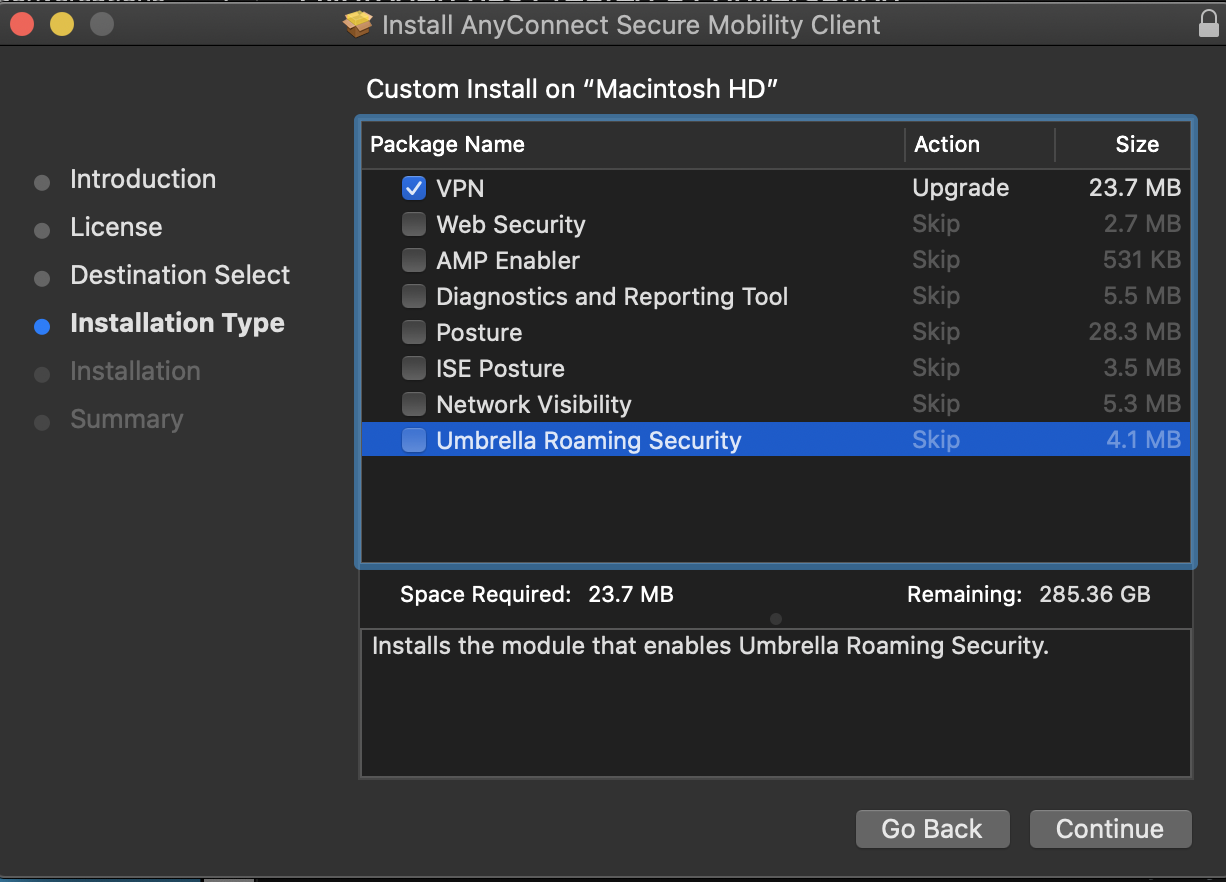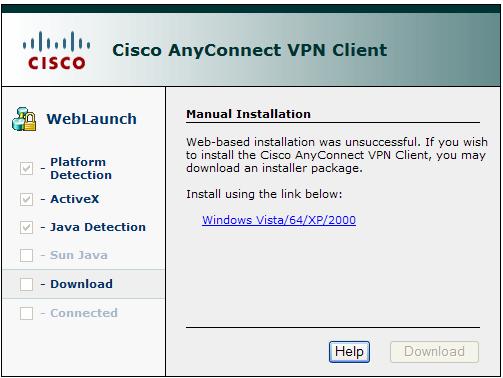- How To Configure Cisco AnyConnect VPN Client For Windows | Univ..
- VPN - Uninstall Cisco AnyConnect Client On Windows ..
- Cisco AnyConnect Not Connecting - Cisco Community
- AnyConnect VPN Client FAQ
How To Configure Cisco AnyConnect VPN Client For Windows | Univ..
I was trying to log into work but had trouble making a VPN connection. I use Cisco AnyConnect VPN Client. This post describes how to fix the following error messages when using Windows 8 Pro:
- If you have dozens of other systems and users successfully connecting, the problem is most likely at the user's location, like with 'hidden' firewall settings on their local router. The low-tech method of verifying this is to have them try logging on through another client network (e.g. Using their cellular data as a hotspot).
- The Cisco AnyConnect software will be needed to connect to the VPN. Cisco AnyConnect VPN client users will not experience any downtime during the maintenance. Find more information on how to download, install, and connect to the Cisco AnyConnect VPN client.
Cisco AnyConnect VPN client Fixes: Right click on task bar and open task manager, then Details, scroll down look for process vpngui.exe and vpnui.exe, Right click and end task. Switch to different VPN access location and try connecting with your Windows credentials. If you try to connect to a wireless network by using the Cisco Network Access Manager (NAM), you cannot connect to the wireless network. You can connect to an open (that is, unsecured) wireless network by using the Cisco Network Access Manager (NAM). What should be done when an attempt to connect to VPN using Cisco AnyConnect generates this message: AnyConnect was not able to establish a connection to the specified secure gateway. Please try connecting again. In the Windows Control Panel navigate to Internet options (Network and Internet Connections, and then Internet Options).

- AnyConnect was not able to establish a connection to the specified secure gateway. Please try connecting again.
- The VPN client driver encountered an error. Please restart your computer or device, then try again.
The steps to fix this problem are as follows:
1. Edit a registry entry by running a program called regedit. Right-click on it and Run as administrator. Note that I use Start8, by Stardock, to have a Start button and menu. After you left-click on Run as administrator, your computer might ask you to enter the admin password.
2. Go to the appropriate VPN registry directory called ComputerHKEY_LOCAL_MACHINESYSTEMCurrentControlSetServicesvpnva
3. Double left-click the DisplayName key.
An Edit String pop-up window will appear.
The text under the Value data: field on my computer looked like this.
@oem20.inf,%vpnva_Desc%;Cisco AnyConnect VPN Virtual Miniport Adapter for Windows x64
4. Change the field to
Cisco AnyConnect VPN Virtual Miniport Adapter for Windows x64
by removing all the text and characters that are on the left of the word Cisco.
The end result should look like this:
5. Left-click the ‘OK’ button.
6. Exit the Registry Editor
7. Run Cisco AnyConnect VPN Client and reconnect.
That’s all there is to it. Good luck!

Update : 2/13/2014
I recently updated my computer on February 13, 2014 with Microsoft’s updates and saw that the text under the Value data: field on my computer looked like this:
@oem10.inf,%VPNVA64_Desc%;Cisco AnyConnect Secure Mobility Client Virtual Miniport Adapter for Windows x64
It is different from what I had originally posted. I’m not really sure how or why it changed and I don’t have time to find out. I also updated to Cisco AnyConnect Secury Mobility Client Version 3.1.04066. As far as I can tell, the value of …
@oem10.inf,%VPNVA64_Desc%;Cisco AnyConnect Secure Mobility Client Virtual Miniport Adapter for Windows x64
. works, but the value of
Cisco AnyConnect VPN Virtual Miniport Adapter for Windows x64
does not work with Cisco AnyConnect Secury Mobility Client Version 3.1.04066.
Cleanmymac version. Update : 2/15/2014
Changing the Value data: field to
Cisco AnyConnect Secure Mobility Client Virtual Miniport Adapter for Windows x64
VPN - Uninstall Cisco AnyConnect Client On Windows ..

without
@oem10.inf,%VPNVA64_Desc%;
seems to work better, too.
Overview
Cisco AnyConnect Not Connecting - Cisco Community
Stanford's VPN allows you to connect to Stanford's network as if you were on campus, making access to restricted services possible. To connect to the VPN from your Windows computer you need to install the Cisco AnyConnect VPN client.
Two types of VPN are available: Apple pc store.
- Default Stanford (split-tunnel). When using Stanford's VPN from home, we generally recommend using the Default Stanford split-tunnel VPN. This routes and encrypts all traffic going to Stanford sites and systems through the Stanford network as if you were on campus. All non-Stanford traffic proceeds to its destination directly.
- Full Traffic (non-split-tunnel). This encrypts all internet traffic from your computer but may inadvertently block you from using resources on your local network, such as a networked printer at home. If you are traveling or using wi-fi in an untrusted location like a coffee shop or hotel, you may wish to encrypt all of your internet traffic through the Full Traffic non-split-tunnel VPN to provide an additional layer of security.
You can select the type of VPN you want to use each time you connect to the Stanford Public VPN.
Install the VPN client
- Download the Cisco AnyConnect VPN for Windows installer.
- Double-click the InstallAnyConnect.exe file.
- When a message saying the Cisco AnyConnect client has been installed, click OK.
Connect to the Stanford VPN
- Launch the Cisco AnyConnect Secure Mobility Client client.
If you don't see Cisco AnyConnect Secure Mobility Client in the list of programs, navigate to Cisco > Cisco AnyConnect Secure Mobility Client. - When prompted for a VPN, enter su-vpn.stanford.edu and then click Connect.
- Enter the following information and then click OK:
- Group: select Default Stanford split- tunnel (non-Stanford traffic flows normally on an unencrypted internet connection) or Full Traffic non-split-tunnel (all internet traffic flows through the VPN connection)
- Username: your SUNet ID
- Password: your SUNet ID password
- Next, the prompt for two-step authentication displays. Enter a passcode or enter the number that corresponds to another option(in this example, enter 1 to authenticate using Duo Push to an iPad). Then click Continue.
- You may have to scroll down the list to see all of your options.
- If your only registered authentication method is printed list, hardware token, or Google Authenticator, the menu does not display. Enter a passcode in the Answer field and click Continue.
- Click Accept to connect to the Stanford Public VPN service.
- Once the VPN connection is established, a message displays in the lower-right corner of your screen, informing you that you are now connected to the VPN.
Disconnect from the Stanford VPN
AnyConnect VPN Client FAQ
- In the notification area, click the Cisco AnyConnect icon if it is displayed. Otherwise, go to your list of programs and click Cisco AnyConnect Secure Mobility Client.
- At the prompt, click Disconnect.

